Accepted Scientific Name: Lapidaria margaretae (Schwantes) Dinter & Schwantes
Möller's deutsche gärtner-zeitung 1927, xlii. 223 Möller
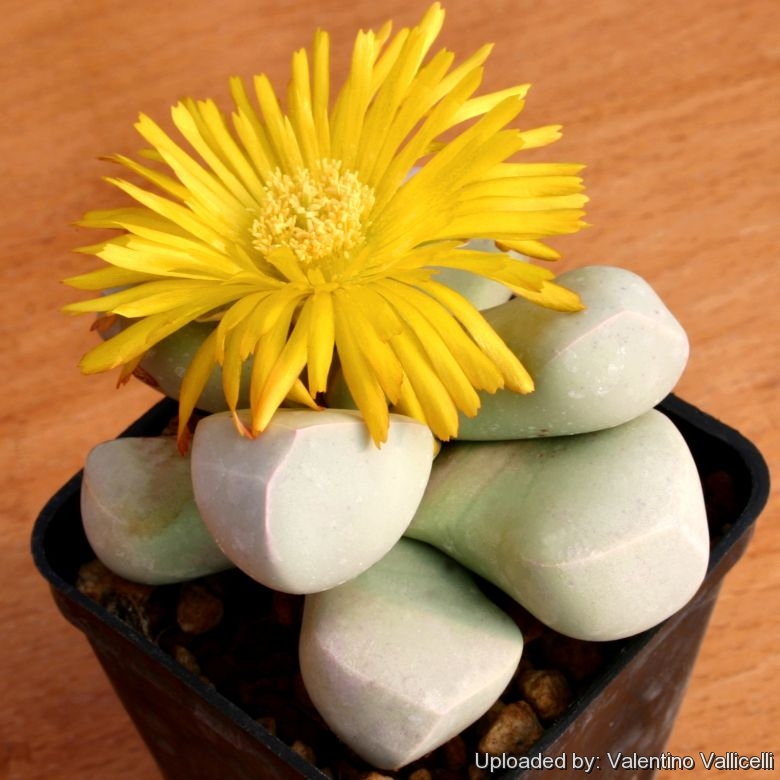
Argyroderma roseatum (Lapidaria margaretae) Photo by: Valentino Vallicelli
These plants tend to resemble, both in shape and colour, the stones and pebbles of the rocky deserts of their natural homes. Leaves are Smooth, sculptured, pinkish-grey.
Origin and Habitat: Southern Namibia and Northern Cape (South Africa). Known from between 5 and 15 sub-populations and locations.
Habitat: Grows sunken (and almost invisible) on white quartz plains or in crevices or red sand or on loose stone. Usually in Northeast-facing gentle hill slope in full Sun or under dwarf shrub in a succulent steppe. Rainfalls approx 250 mm x year. With a wide range of other dwarf succulents like Lithops sp. and Anacampseros quinariaSN|25185]]SN|25185]]; approximately 700-110m.
Synonyms:
Common Names include:
ENGLISH: Karoo Rose
Description: Compact stemless succulent with at least 2-3 pairs of stone shaped leaves (more in cultivation), with 1 to 3 branches (rarely forms clumps)
Leaves: Rounded-triangular, as thick as wide, keel and margins hard and prominent, usually greys white or pinkish at the base with rest of leaf paler. the internodes are short with the subsequent leaves touching and supporting one another at their bases resulting in compact heads.
Flowers: Solitary 5cm wide in the autumn, with up to 100 golden yellow petals later white at base, 300-500 stamens mainly erect in the centre.
Notes: Lapidaria is a monotypic genus used nowadays to be included in Aryroderma for the hard greyish leaves, but Lapidaria differs to the other argyrodermas clearly for the erect ring of stamens.
Bibliography:
Major references and further lectures
1) Heidrun E.K. Hartmann “Illustrated Handbook of Succulent Plants: Aizoaceae F-Z” Springer Science & Business Media, 2002
2) Gideon Smith u.a. “Mesembs of the World: Illustrated Guide to a Remarkable Succulent Group.” Briza Publications, 1998
3) Gustav Schwantes “Zur Systematik der Mesembryanthemen.” In: Zeitschrift für Sukkulentenkunde. volume 2, 1926
4) Gustav Schwantes “Zur Systematik der Mesembryanthemen.” In: Zeitschrift für Sukkulentenkunde. Volume 3, 192Major references and further lectures
5) Hermann Jacobsen “A handbook of succulent plants: descriptions, synonyms, and cultural details for succulents other than Cactaceae, Volume 1” Blandford Press, 1960
6) Werner Rauh “The Wonderful World of Succulents:Cultivation and Description of Selected Succulent Plants Other Than Cacti” Smithsonian Institution Press, 1984
7) James Cullen, Sabina G. Knees, H. Suzanne Cubey “The European Garden Flora Flowering Plants: A Manual for the Identification of Plants Cultivated in Europe, Both Out-of-Doors and Under Glass” Cambridge University Press, 11/ago/2011
8) Gideon Smith u.a. (Hrsg.) "Mesembs of the World: Illustrated Guide to a Remarkable Succulent Group." Briza Publications, 1998
 looking like a multistory building / apartment. (Lapidaria margaretae) Photo by: K.k. Agrawal
looking like a multistory building / apartment. (Lapidaria margaretae) Photo by: K.k. Agrawal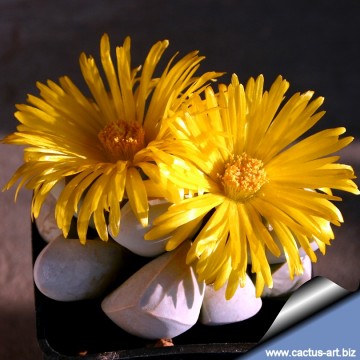 Argyroderma roseatum (Lapidaria margaretae) Photo by: Cactus Art
Argyroderma roseatum (Lapidaria margaretae) Photo by: Cactus Art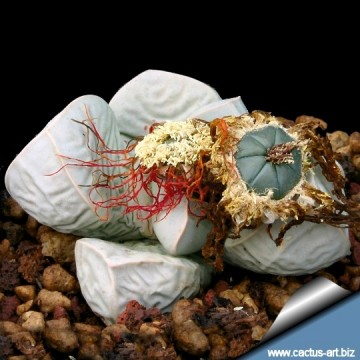 Argyroderma roseatum (Lapidaria margaretae) Photo by: Cactus Art
Argyroderma roseatum (Lapidaria margaretae) Photo by: Cactus Art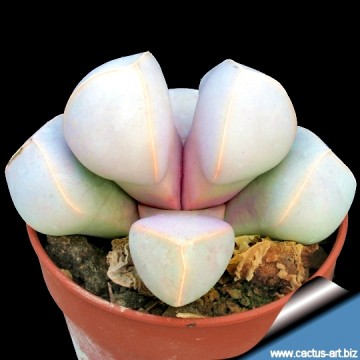 Argyroderma roseatum (Lapidaria margaretae) Photo by: Cactus Art
Argyroderma roseatum (Lapidaria margaretae) Photo by: Cactus Art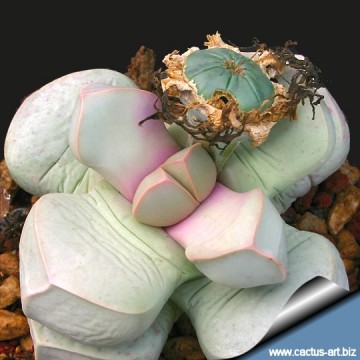 Argyroderma roseatum (Lapidaria margaretae) Photo by: Cactus Art
Argyroderma roseatum (Lapidaria margaretae) Photo by: Cactus Art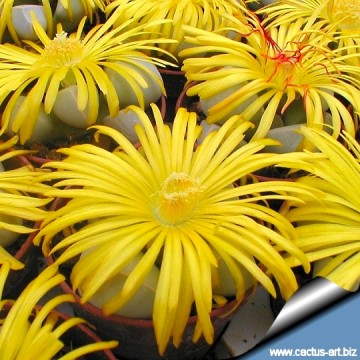 Argyroderma roseatum (Lapidaria margaretae) Photo by: Cactus Art
Argyroderma roseatum (Lapidaria margaretae) Photo by: Cactus Art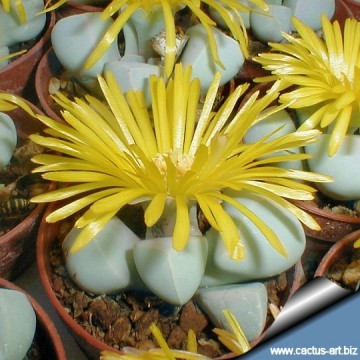 Argyroderma roseatum (Lapidaria margaretae) Photo by: Cactus Art
Argyroderma roseatum (Lapidaria margaretae) Photo by: Cactus Art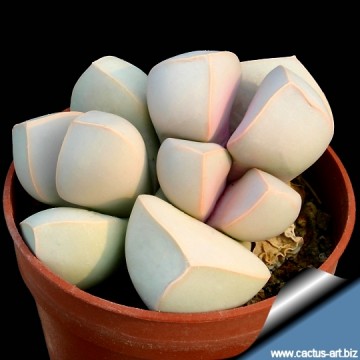 Argyroderma roseatum (Lapidaria margaretae) Photo by: Cactus Art
Argyroderma roseatum (Lapidaria margaretae) Photo by: Cactus ArtCultivation and Propagation: This plants are relatively easy to cultivate in a an open, gritty and well drained soil, but have the tendency to up and die if the conditions are not right and, sometimes it seems, even if they are! They need full bright sunlight throughout the year. They will grow strongly at any time when the weather is warm and sunny and water is available and are considered opportunistic growers. They will become dormant in very hot weather, particularly when nights stay very warm in the hottest couple of months of summer, and should hardly be watered at this time. Probably best to shade them during the hottest weather, they will be dormant anyway. They will grow strongly in autumn and also may grow in spring. They probably won't show much growth in winter but might if they are in a very sunny position perhaps indoors. Water during the growing season about once every one-two weeks (depending on the humidity of the air) like a cactus and then leave it to drain well and to dry out completely before watering again. If in doubt, don't water, you are very unlikely to kill it from underwatering. Anyway do not over-water as they are very greedy drinkers and split within a day or so if given too much water Although the split of course disfigures the plant, this is not a major disaster as the following season, when the old body has shrivelled, the new one appears clean and unblemished. Be cautious about watering in winter because you may produce etiolated growth from lack of sun. At growth resumption when the new buds appear (after the old basal pair of leaves is totally shrivelled) a little water is given but not too much. Frost Tolerance -4 ° C for short periods.


















